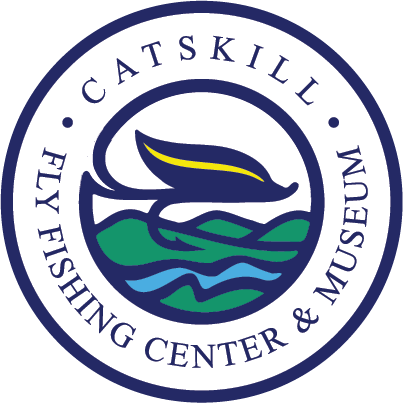George Parker Holden
As an angling student, George Parker Holden followed the writings of Thaddeus Norris on American angling. In 1919 Holden penned his first book, Streamcraft. At the time, America was experiencing a truly unique fly fishing evolution – weaning itself from the British tradition. This new American manner of fly fishing was distinct in both style and technique. It relied on an approach of recognizing specific natural insects and developing their imitations. The book American Trout Insects, written and illustrated by Louis Rhead influenced Holden to do further investigations and confirm his findings by testing his selection of patterns on Catskill streams. Streamcraft was truly ‘An Angling Manual’ on how to’s for the angler. His second book followed only a year later and was titled The Idyl of the Split Bamboo Rod. It was also a ‘how to’ book focusing on the construction of bamboo fly rods. ‘Idyl’ remains a classic for those interested in cane rod making. In his Angling Recollections and Practice (1931), we learn of Holden’s first experiences that evolved into a passion so admired by what he called “the brotherhood.”
Holden’s books, together with contributions to Forest and Stream, Field and Stream, Outdoor America, Outdoor Life and the Anglers’ Club of New York bulletins, were informative yet influential. Out of George Parker Holden’s genius and angling passion would emerge many followers and admirers; among them were cane rod builder protégé Everett Garrison (1893-1976) and Catskill region fly angler and tyer Harry Darbee (1906- 1983).
Both of those individuals would rise to (and perhaps surpass) Holden’s own level of fame–Garrison as one of the most talented, creative and influential rod builders who ever held bamboo in his hands and Darbee who became the Catskill trout fly tyer personified.
Harry Darbee once wrotethat George Parker Holden’s Streamcraft “probably had as much influence on fly tiers and fishers as anyone else in his day. His book was the first one I owned and I almost memorized it in the early days of our commercial tying.” Darbee credited Holden as being the first person to publicize Catskill fly tying lore. Holden’s Streamcraft chapter titled “The Angler’s Flies and How to Tie Them” demonstrated step-by-step fly tying instructions using photographs in place of illustrations. Everything from setting wings to winding hackles was described in Holden’s now classic book. Holden’s inclusion in Streamcraft of William Mills & Son color fly plates that featured bass, trout and salmon flies made the book a valuable fly pattern reference guide. Dressings for many of the standard patterns were featured in the book, along with interesting historical observations surrounding the flies.
Beyond discussion of fly tying, fly pattern descriptions and dressings, casting techniques and rod selection notes, Holden’s Streamcraft alsointroduced to his readers to the names of several members of the growing “Catskill School” of fly tyers. These and other regional fly fishing personalities would later become icons commonly associated with fly angling history: Theodore Gordon and his Protégées Roy Steenrod and Herm Christian along with George M.L. LaBranche and Louis Rhead.

